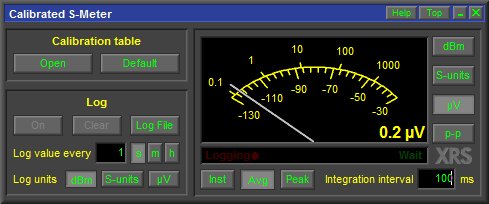By Rich Carlson, N9JIG
So what does Signal Strength really mean? Most scanners these days have a Signal Strength indicator, usually with up to 4 or 5 bars to indicate a strong signal. How are these calibrated? Is 4 bars twice as good as 2? Do I need a full-scale signal to hear my local action?
To answer these questions let’s look at how the scanner comes up with the signal strength indications. Basically, it is a representation of the RELATIVE strength of a given signal. The radio reads the voltage present within its circuitry when a strong signal would provide a higher voltage and translates that to the number of bars displayed. A weaker signal would be expected to produce a lower voltage and thus fewer bars.
The big thing to remember is that these meters are not calibrated so they are nothing more than a pretty good ideal if whether a signal is strong or weak. It does not mean that a certain indication (let’s say 3 bars) means a specific signal level. While one can expect that 4 bars is better than 3 (and it usually is) that doesn’t mean that the signal is 33% stronger.
What the signal strength indicates (it doesn’t measure…) is the strength of the signal at the antenna jack. It does not indicate voice quality. One can have a signal that indicates 4 or 5 bars but with a lousy voice quality and hear very little. Conversely, an indicated signal strength of just one bar could still present an excellent quality voice signal.
What is also important in using the signal strength indication is the noise floor. Noise Floor is the level of noise present when nothing else is detected. The noise floor is usually higher in city environments than rural ones due to the higher level of electronic equipment generating signals. This includes computers, Wi-Fi, broadcast stations and other transmitters etc. The noise floor is usually higher in homes than fields due to the same issues. Certain specific locations tend to have much higher noise floors than others. Gas stations are notorious for RF noise generated by gas pumps for some reason. Paging transmitters tend to be noisy as well.
So what then does the noise floor have to do with how many bars I get on my scanner? Well, with a high noise floor you have to have the squelch set higher to block the ambient signals. Some places might have a noise floor that generates 2 or 3 bars, that means anything you want to hear has to be stronger than that.
The signal strength indicator also responds to preamps and antenna issues. While a preamp increases signal strength it also increases the noise floor. Connect a better antenna and you should expect more bars. Be careful that you don’t overload the scanner, too much signal will cause more problems than a poor signal will.
Preamps work best in more rural areas that have a low noise floor but will overload scanners on strong signals, especially in high RF areas like cities.
One more note: You will often see a signal strength indication on a trunked system even when it is scanning without stopping. The indicated signal strength is that of the control data channel.
Credit: Rich Carlson from the Scanner Master Blog https://www.scannermasterblog.com/
